Time:2025-06-23
In the rapidly evolving landscape of modern lighting solutions, solar - powered energy - efficient silicone neon lighting has emerged as a revolutionary and sustainable option. This innovative lighting technology combines the best of three worlds: solar energy harvesting, energy - efficient LED technology, and the durability and flexibility of silicone materials. As the global push for environmental sustainability intensifies and the demand for cost - effective, yet high - quality lighting grows, solar - powered energy - efficient silicone neon lighting is set to play a pivotal role in various applications, from residential to commercial and industrial settings.
The Technology Behind Solar - Powered Energy - Efficient Silicone Neon Lighting
Solar Panel Integration
At the heart of this lighting system is the solar panel, which serves as the energy - gathering component. Solar panels are typically made of semiconductor materials, most commonly silicon. When sunlight hits the solar panel, it causes electrons in the semiconductor to gain energy and move, generating an electric current. This direct - current (DC) electricity is then either stored in a battery for later use or directly used to power the silicone neon lighting. The size and efficiency of the solar panel are crucial factors. Higher - efficiency panels can convert a larger percentage of sunlight into electricity, allowing for more effective charging of the battery or direct powering of the lights. Additionally, the orientation and location of the solar panel installation are optimized to ensure maximum exposure to sunlight throughout the day.
Energy - Efficient LED Technology
The lighting source within the silicone neon strip is based on LED (Light - Emitting Diode) technology. LEDs are known for their high energy - conversion efficiency. Unlike traditional incandescent bulbs, which waste a significant amount of energy in the form of heat, LEDs convert a large proportion of the electrical energy they receive into visible light. This energy - efficient operation is a key aspect of reducing overall power consumption. The color - rendering properties of LEDs used in silicone neon lighting are carefully selected to mimic the warm and inviting glow of traditional neon lights while maintaining energy efficiency. Moreover, advancements in LED technology have led to the development of LEDs with longer lifespans, reducing the need for frequent replacements and further enhancing the sustainability of the lighting system.
Silicone Encapsulation for Durability and Flexibility
The silicone casing that encloses the LED - based lighting elements offers several advantages. Silicone is a highly durable and flexible material. It provides excellent protection to the internal components, including the LEDs and the circuit board. The silicone encapsulation acts as a barrier against moisture, dust, and physical damage. In outdoor applications, where the lighting may be exposed to harsh weather conditions, such as rain, snow, and UV rays, the silicone casing ensures the longevity of the product. Its flexibility allows the neon strips to be easily bent and shaped to fit various surfaces and installation requirements, making it suitable for both simple and complex lighting designs.
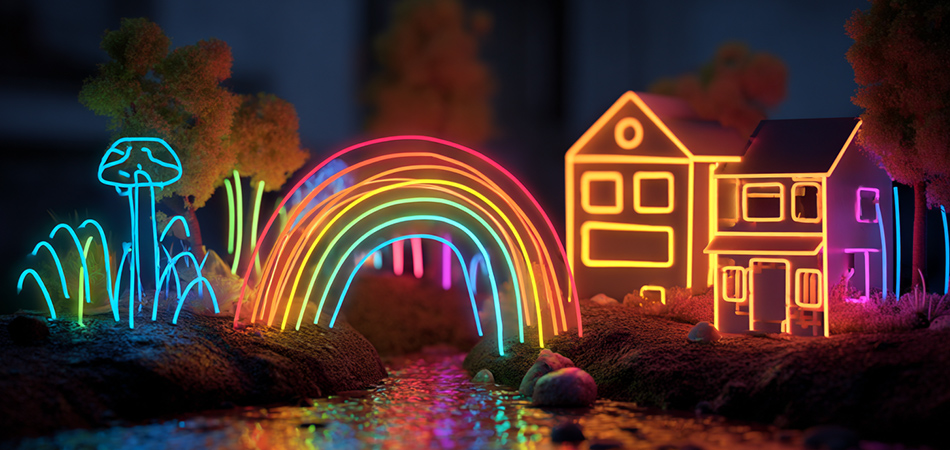
Advantages of Solar - Powered Energy - Efficient Silicone Neon Lighting
Energy Independence and Cost Savings
One of the most significant advantages of solar - powered silicone neon lighting is its energy independence. By harnessing sunlight as the primary energy source, these lighting systems reduce or eliminate the reliance on the grid. This is particularly beneficial in off - grid locations or areas with unreliable power supply. For consumers, it translates into substantial cost savings over time. There are no monthly electricity bills associated with running the lights, and the initial investment in the solar - powered lighting system can be recouped in a relatively short period, depending on factors such as the local cost of electricity and the amount of sunlight available. Additionally, the long lifespan of the components, especially the LEDs and the solar panels, further contributes to the cost - effectiveness by reducing maintenance and replacement costs.
Environmental Sustainability
Solar - powered energy - efficient silicone neon lighting is a highly environmentally friendly option. The use of solar energy as a renewable power source means that there are no harmful emissions associated with the operation of the lights. This helps to reduce the carbon footprint and contributes to the global effort to combat climate change. In contrast to traditional lighting sources that rely on fossil - fuel - based electricity generation, which releases greenhouse gases, solar - powered lighting is a clean and sustainable alternative. Moreover, the energy - efficient nature of the LEDs further minimizes energy consumption, conserving natural resources and reducing the overall environmental impact of lighting systems.
Durability and Low Maintenance
The combination of high - quality silicone materials and energy - efficient LEDs results in a lighting system that is highly durable. The silicone casing protects the internal components from environmental factors, and the robust construction of the LEDs and the circuit board ensures stable performance over an extended period. These lighting systems require minimal maintenance. There is no need to regularly replace bulbs as in traditional lighting setups, and the solar panels are designed to be low - maintenance, with a long lifespan and resistance to common wear and tear. In outdoor applications, the durability of the system is even more crucial, and solar - powered silicone neon lighting can withstand harsh weather conditions, making it a reliable choice for long - term use.
Design Flexibility
Solar - powered silicone neon lighting offers a high degree of design flexibility. The flexibility of the silicone neon strips allows them to be shaped and contoured to fit any surface or design concept. They can be used to create intricate patterns, outlines, and decorative elements in both indoor and outdoor spaces. The ability to choose from a wide range of colors and lighting effects further enhances the design possibilities. Whether used for accent lighting in a residential living room, creating eye - catching signage in a commercial setting, or adding a unique touch to an architectural facade, the design flexibility of these lighting systems makes them suitable for a diverse range of applications.
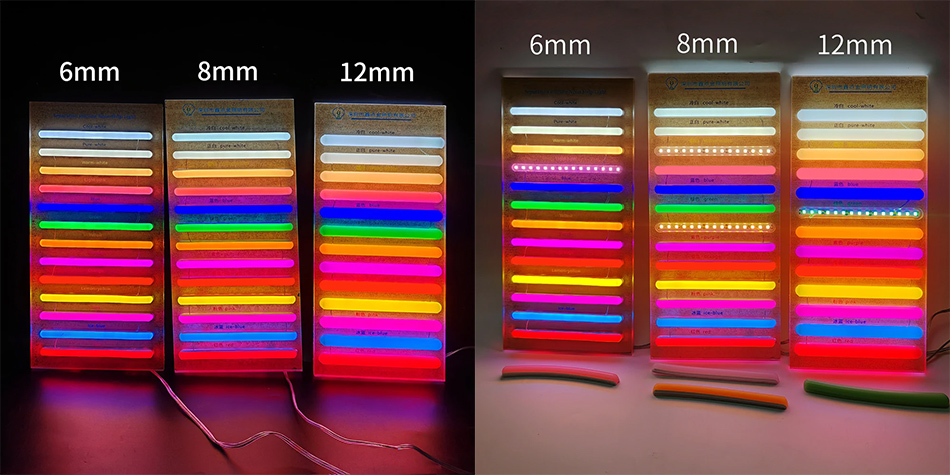
Applications of Solar - Powered Energy - Efficient Silicone Neon Lighting
Residential Applications
In residential settings, solar - powered silicone neon lighting can be used in various ways to enhance the aesthetics and functionality of the home. For outdoor spaces, such as gardens, patios, and walkways, the lighting can be installed to create a warm and inviting atmosphere. Solar - powered neon strips can be placed along the edges of flower beds, around trees, or under deck railings to provide soft illumination. In the backyard, they can be used to highlight a swimming pool or a hot tub area. Indoors, these lights can be used for accent lighting, such as behind furniture, along the edges of shelves, or to create a unique lighting effect in a home theater or a game room. They can also be used to add a decorative touch to the interior design, such as creating a colorful glow around a mirror or a piece of artwork.
Commercial Applications
Commercial establishments can benefit greatly from solar - powered energy - efficient silicone neon lighting. In retail stores, the lighting can be used to create eye - catching window displays. The bright and colorful neon strips can draw the attention of passers - by and showcase products in an attractive way. Inside the store, they can be used to highlight product shelves, aisles, and special promotions. In restaurants and cafes, the lighting can be used to set the mood. Soft, warm - colored neon strips can create a cozy and inviting dining atmosphere, while brighter, more vibrant colors can be used to add a touch of energy and excitement. In hotels, the lighting can be used in the lobby, corridors, and guest rooms to enhance the overall guest experience.
Architectural and Landscape Applications
Architects and landscape designers often incorporate solar - powered silicone neon lighting into their projects to enhance the visual appeal of buildings and outdoor spaces. In architecture, the lighting can be used to accentuate the unique features of a building's facade. Neon strips can be installed along the edges of roofs, eaves, windows, and doors to create a striking nighttime presence. The soft, glowing lines can add depth and dimension to the building, making it stand out in the urban landscape. In landscape design, these lights can be used to illuminate pathways, gardens, and outdoor structures. They can be installed along the edges of walkways, around trees and shrubs, or under benches and pergolas, providing a safe and inviting outdoor environment. The flexibility of the neon strips allows for creative installations that can highlight the natural beauty of the landscape.
Industrial Applications
In industrial settings, solar - powered silicone neon lighting can be used for safety and illumination purposes. In warehouses, factories, and industrial yards, the lighting can be installed to mark pathways, indicate safety zones, and provide general illumination. The energy - efficiency of the lighting system is particularly beneficial in large - scale industrial applications, where reducing energy consumption can lead to significant cost savings. The durability of the silicone - encapsulated lights also makes them suitable for harsh industrial environments, where they may be exposed to dust, dirt, and mechanical stress.
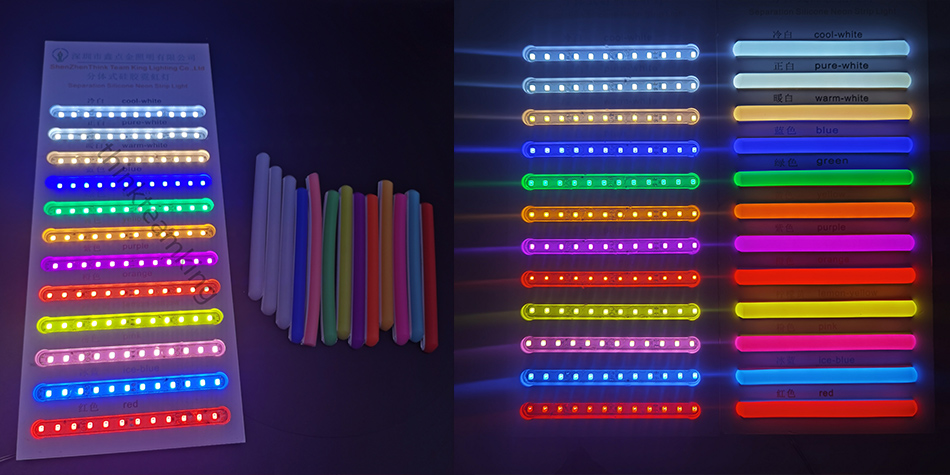
Factors to Consider When Choosing Solar - Powered Energy - Efficient Silicone Neon Lighting
Solar Panel Efficiency and Capacity
When selecting a solar - powered silicone neon lighting system, the efficiency and capacity of the solar panel are crucial factors. Higher - efficiency solar panels can capture more sunlight and convert it into electricity more effectively. The capacity of the solar panel, measured in watts, should be sufficient to meet the power requirements of the neon lighting, especially considering factors such as the number of hours of sunlight available in the installation location and the energy consumption of the lights. It is also important to consider the quality of the solar panel, as higher - quality panels are more likely to have a longer lifespan and better performance over time.
LED Quality and Color Rendering
The quality of the LEDs used in the silicone neon strips is another important consideration. High - quality LEDs offer better brightness, color consistency, and longer lifespan. The color - rendering index (CRI) of the LEDs is also significant, as it determines how accurately the LEDs can reproduce colors. For applications where color accuracy is important, such as in art galleries or retail stores, LEDs with a high CRI should be chosen. Additionally, the color options available for the neon strips should match the intended aesthetic and application requirements.
Silicone Material Quality
The quality of the silicone material used in the encapsulation of the lighting elements is essential for the durability and performance of the system. High - quality silicone should be flexible, resistant to moisture, UV rays, and temperature variations. It should also provide good protection to the internal components, ensuring that the lights can withstand harsh environmental conditions. The thickness and texture of the silicone casing can also affect the light diffusion and the overall appearance of the neon strips.
Battery Performance (if applicable)
If the solar - powered lighting system includes a battery for energy storage, the performance of the battery is a critical factor. The battery should have a sufficient capacity to store enough energy to power the lights during periods of low sunlight or at night. The lifespan of the battery, its charging and discharging efficiency, and its ability to withstand repeated charge - discharge cycles are all important considerations. Lithium - ion batteries are commonly used in solar - powered lighting systems due to their high energy density, long lifespan, and relatively low self - discharge rate.
Installation and Maintenance Requirements
The ease of installation and maintenance of the solar - powered silicone neon lighting system should also be taken into account. The system should come with clear installation instructions and all the necessary mounting hardware. For DIY installation, the complexity of the installation process should be within the capabilities of the user. In terms of maintenance, the system should be designed to require minimal upkeep, with easy - to - access components for any necessary repairs or replacements.
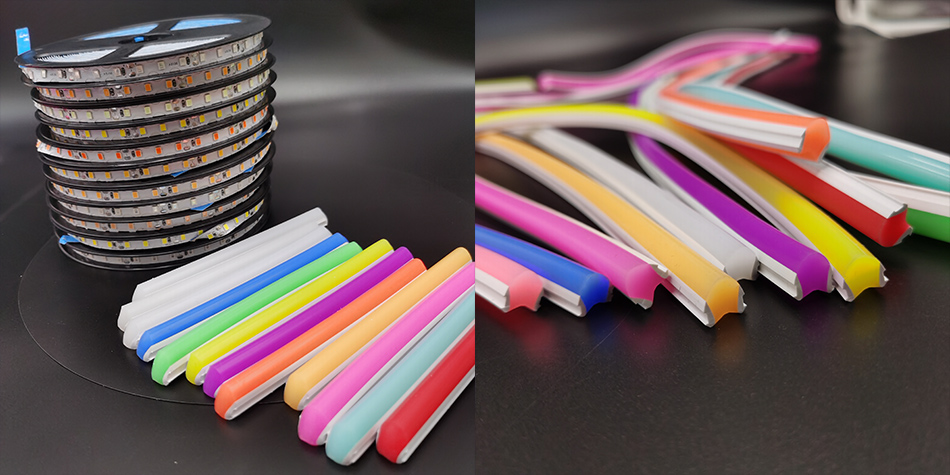
Market Trends and Future Outlook
Increasing Adoption in Emerging Markets
As the cost of solar - powered lighting technology continues to decline and awareness of environmental sustainability grows, there is an increasing trend of adoption in emerging markets. These markets, which often have a large population and a growing demand for energy - efficient lighting solutions, are seeing a rise in the installation of solar - powered silicone neon lighting in both urban and rural areas. Governments in emerging economies are also promoting the use of renewable energy - based lighting through incentives and subsidies, further driving the market growth.
Technological Advancements
The solar - powered lighting industry is constantly evolving, with ongoing technological advancements. In the future, we can expect to see more efficient solar panels with higher conversion rates, allowing for more effective energy harvesting. The development of new materials for LEDs may lead to even more energy - efficient and longer - lasting lighting sources. Additionally, improvements in battery technology, such as the development of more powerful and longer - lasting batteries with faster charging capabilities, will enhance the performance of solar - powered silicone neon lighting systems.
Integration with Smart Home and Building Systems
The trend towards smart home and building automation is also influencing the solar - powered silicone neon lighting market. In the future, these lighting systems are likely to be integrated with smart home hubs, allowing users to control the lighting remotely through their smartphones or other smart devices. Features such as dimming, color - changing, and scheduling can be easily implemented, providing users with a more convenient and personalized lighting experience. In commercial buildings, the integration of solar - powered lighting with building management systems can optimize energy usage and enhance overall building efficiency.
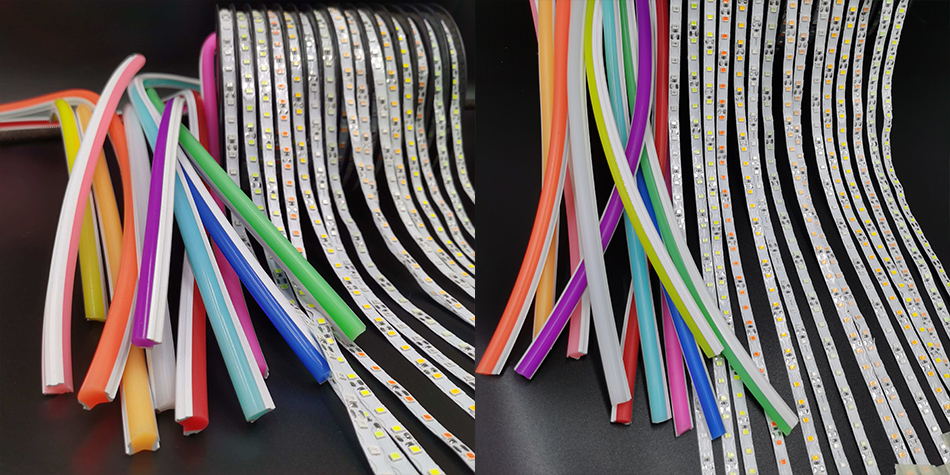
Challenges and Solutions
Initial Cost Barrier
One of the main challenges facing the widespread adoption of solar - powered energy - efficient silicone neon lighting is the relatively high initial cost. The cost of the solar panels, batteries (if applicable), and the lighting components can be a deterrent for some consumers. However, as technology advances and economies of scale come into play, the cost of these systems is expected to decline. Additionally, government incentives, such as tax credits and rebates for installing renewable energy - based lighting, can help offset the initial cost. Financing options, such as solar - lease programs, are also becoming more available, allowing consumers to pay for the lighting system over time.
Dependence on Sunlight
The performance of solar - powered lighting systems is dependent on sunlight availability. In regions with limited sunlight or during periods of extended cloudy weather, the charging of the battery or the direct powering of the lights may be affected. To address this challenge, some systems are designed to be hybrid, allowing for backup power from the grid when sunlight is insufficient. Additionally, advancements in energy storage technology, such as the development of more efficient and higher - capacity batteries, can help store more energy during sunny periods for use during low - light conditions.
Standardization and Compatibility
In the solar - powered lighting market, there is a lack of standardization in terms of components, interfaces, and communication protocols. This can make it difficult for consumers to mix and match different products from different manufacturers, and it can also pose challenges for system integration. To overcome this, industry organizations and standard - setting bodies are working towards developing common standards for solar - powered lighting systems. This will improve compatibility, make installation and maintenance easier, and promote healthy competition in the market.
Conclusion
Solar - powered energy - efficient silicone neon lighting represents a significant step forward in the lighting industry. With its numerous advantages, including energy independence, environmental sustainability, durability, and design flexibility, it is well - positioned to meet the lighting needs of various applications in the 21st century. As technology continues to advance and costs continue to decline, we can expect to see an increasing adoption of this innovative lighting solution worldwide. By addressing the challenges through technological advancements and industry collaboration, solar - powered energy - efficient silicone neon lighting has the potential to revolutionize the way we light our homes, businesses, and public spaces, leading us towards a more sustainable and energy - efficient future.